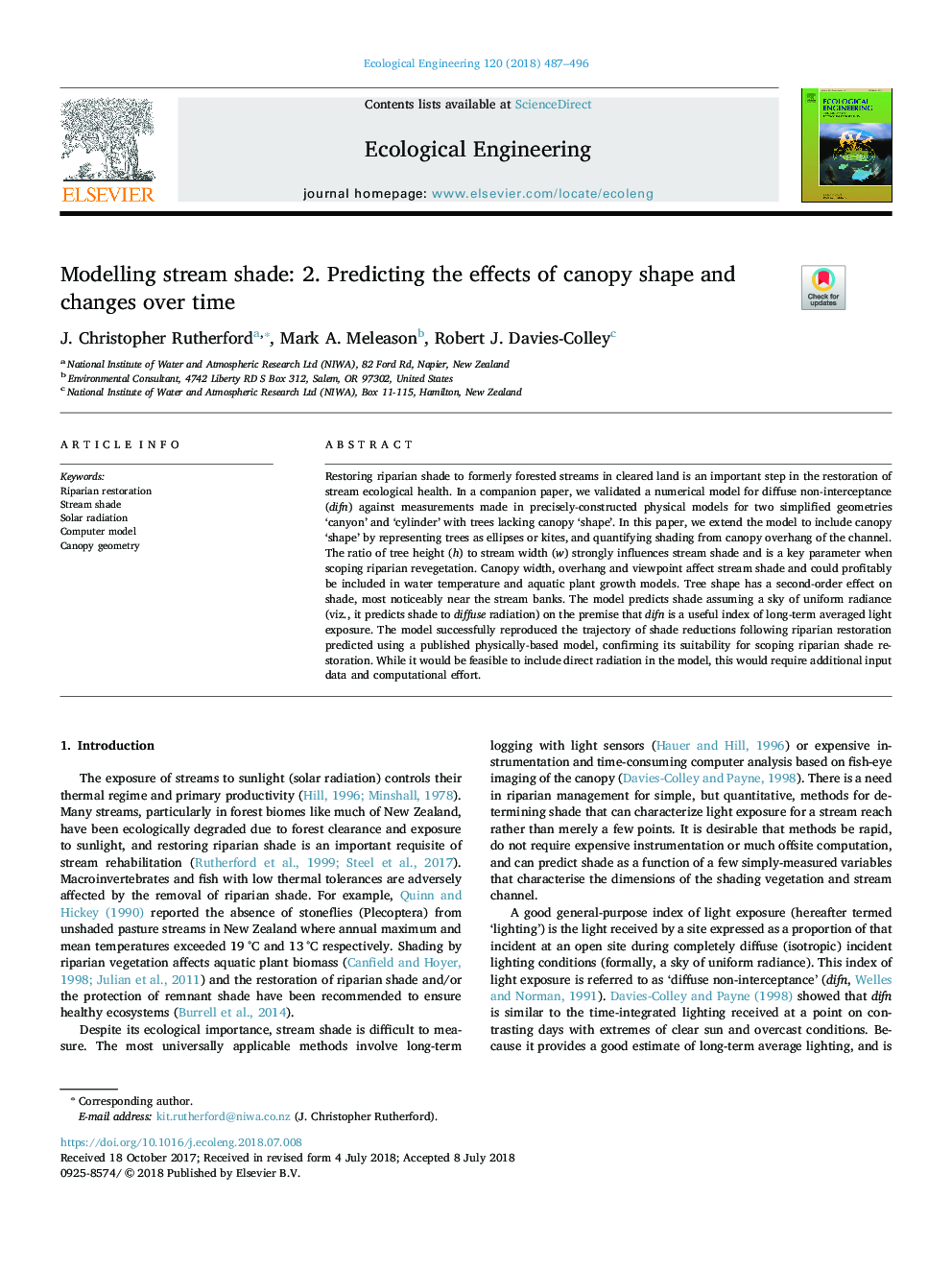| Article ID | Journal | Published Year | Pages | File Type |
|---|---|---|---|---|
| 8847855 | Ecological Engineering | 2018 | 10 Pages |
Abstract
Restoring riparian shade to formerly forested streams in cleared land is an important step in the restoration of stream ecological health. In a companion paper, we validated a numerical model for diffuse non-interceptance (difn) against measurements made in precisely-constructed physical models for two simplified geometries 'canyon' and 'cylinder' with trees lacking canopy 'shape'. In this paper, we extend the model to include canopy 'shape' by representing trees as ellipses or kites, and quantifying shading from canopy overhang of the channel. The ratio of tree height (h) to stream width (w) strongly influences stream shade and is a key parameter when scoping riparian revegetation. Canopy width, overhang and viewpoint affect stream shade and could profitably be included in water temperature and aquatic plant growth models. Tree shape has a second-order effect on shade, most noticeably near the stream banks. The model predicts shade assuming a sky of uniform radiance (viz., it predicts shade to diffuse radiation) on the premise that difn is a useful index of long-term averaged light exposure. The model successfully reproduced the trajectory of shade reductions following riparian restoration predicted using a published physically-based model, confirming its suitability for scoping riparian shade restoration. While it would be feasible to include direct radiation in the model, this would require additional input data and computational effort.
Related Topics
Life Sciences
Agricultural and Biological Sciences
Ecology, Evolution, Behavior and Systematics
Authors
J. Christopher Rutherford, Mark A. Meleason, Robert J. Davies-Colley,
